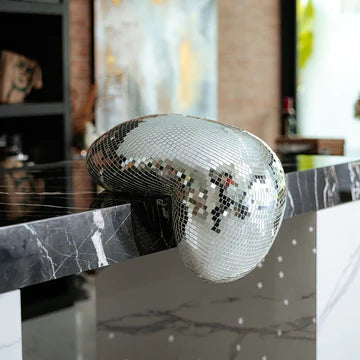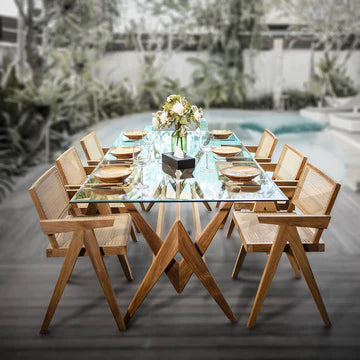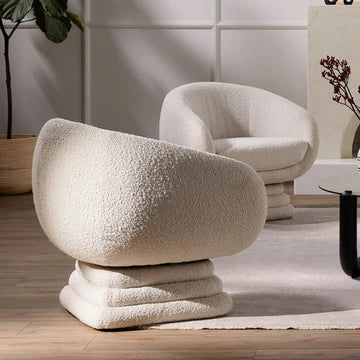Throwback Thursday: 1940s Style
As has been noted in posts about trends, what’s old often becomes new again, with trends constantly cycling. When you look back at the trends of the past you can get an idea of what’s popular more frequently and what conditions might lead to certain elements becoming popular again. That’s why we decided to start this Throwback Thursday column, to look back at the design of decades of the past. We’ve already reflected on the interior design trends of the 1970s and 1980s. Today we’re going to go back further and take a look at the style and trends of the 1940s and how they’re influencing today’s designs. 

The 1940s Style
The 1940s is basically defined by World War II. Basically every aspect of life was affected by it. In terms of design the decade is basically split into wartime and post-war. During the ware there wasn’t much new design as rationing and supply shortages stifled production for anything but war supplies. After the war it was a time of recovery, and production ramped up again. Technologies that had been developed for war use were now available to home consumers. After the war was also when the rise of the single-family suburban home began. While the first half of the ‘40s was still heavily influenced by the designs of the 1930s, the second half set the stage for the mid-century modern design of the 1950s that’s been so popular lately. But let’s take a look at what was going on design-wise during the 1940s.  Hollywood Glam - during the Great Depression and World War II many people turned to big Hollywood films as a form of escapism. People would see the glamorous lives their favorite movie characters or actresses were living and want to recreate it in their own home. That translated into lots of mirrors, fringe, and metallic finishes. Bedrooms and living rooms tended to be formal and very pulled-together.
Hollywood Glam - during the Great Depression and World War II many people turned to big Hollywood films as a form of escapism. People would see the glamorous lives their favorite movie characters or actresses were living and want to recreate it in their own home. That translated into lots of mirrors, fringe, and metallic finishes. Bedrooms and living rooms tended to be formal and very pulled-together.  Traditional Decor - on the flip side of Hollywood Glam, many people favored more traditional decor. For some this was likely a side effect of not having the resources to update their decor during the hard times of the Great Depression and World War II. After the war was over and a wave of patriotism swept the country and people turned to traditional American styles like Colonial, and Pennsylvania Dutch.
Traditional Decor - on the flip side of Hollywood Glam, many people favored more traditional decor. For some this was likely a side effect of not having the resources to update their decor during the hard times of the Great Depression and World War II. After the war was over and a wave of patriotism swept the country and people turned to traditional American styles like Colonial, and Pennsylvania Dutch.  Linoleum Floors - while wall-to-wall carpeting slowly replaced hardwood floors in living rooms and bedrooms, linoleum flooring quickly became the favorite in 1940s kitchens. The material was strong and long-lasting, and after the war there was plenty of it to go around. Bold geometric patterns were the most popular option, adding even more color to the kitchen.
Linoleum Floors - while wall-to-wall carpeting slowly replaced hardwood floors in living rooms and bedrooms, linoleum flooring quickly became the favorite in 1940s kitchens. The material was strong and long-lasting, and after the war there was plenty of it to go around. Bold geometric patterns were the most popular option, adding even more color to the kitchen.  Wood Furniture - during the 1940s wood was a heavily-used material due to its versatile nature and availability during the war. Besides the traditional furniture made of wood, bent wood furniture became very popular. Charles Eames has developed ways to bend plywood during the war, and once the war was over him and Ray turned their focus to furniture. The Eames’ chairs were winning design competitions and catching the public eye by the end of the 1940s.
Wood Furniture - during the 1940s wood was a heavily-used material due to its versatile nature and availability during the war. Besides the traditional furniture made of wood, bent wood furniture became very popular. Charles Eames has developed ways to bend plywood during the war, and once the war was over him and Ray turned their focus to furniture. The Eames’ chairs were winning design competitions and catching the public eye by the end of the 1940s. 
 Hollywood Glam - during the Great Depression and World War II many people turned to big Hollywood films as a form of escapism. People would see the glamorous lives their favorite movie characters or actresses were living and want to recreate it in their own home. That translated into lots of mirrors, fringe, and metallic finishes. Bedrooms and living rooms tended to be formal and very pulled-together.
Hollywood Glam - during the Great Depression and World War II many people turned to big Hollywood films as a form of escapism. People would see the glamorous lives their favorite movie characters or actresses were living and want to recreate it in their own home. That translated into lots of mirrors, fringe, and metallic finishes. Bedrooms and living rooms tended to be formal and very pulled-together.  Traditional Decor - on the flip side of Hollywood Glam, many people favored more traditional decor. For some this was likely a side effect of not having the resources to update their decor during the hard times of the Great Depression and World War II. After the war was over and a wave of patriotism swept the country and people turned to traditional American styles like Colonial, and Pennsylvania Dutch.
Traditional Decor - on the flip side of Hollywood Glam, many people favored more traditional decor. For some this was likely a side effect of not having the resources to update their decor during the hard times of the Great Depression and World War II. After the war was over and a wave of patriotism swept the country and people turned to traditional American styles like Colonial, and Pennsylvania Dutch.  Linoleum Floors - while wall-to-wall carpeting slowly replaced hardwood floors in living rooms and bedrooms, linoleum flooring quickly became the favorite in 1940s kitchens. The material was strong and long-lasting, and after the war there was plenty of it to go around. Bold geometric patterns were the most popular option, adding even more color to the kitchen.
Linoleum Floors - while wall-to-wall carpeting slowly replaced hardwood floors in living rooms and bedrooms, linoleum flooring quickly became the favorite in 1940s kitchens. The material was strong and long-lasting, and after the war there was plenty of it to go around. Bold geometric patterns were the most popular option, adding even more color to the kitchen.  Wood Furniture - during the 1940s wood was a heavily-used material due to its versatile nature and availability during the war. Besides the traditional furniture made of wood, bent wood furniture became very popular. Charles Eames has developed ways to bend plywood during the war, and once the war was over him and Ray turned their focus to furniture. The Eames’ chairs were winning design competitions and catching the public eye by the end of the 1940s.
Wood Furniture - during the 1940s wood was a heavily-used material due to its versatile nature and availability during the war. Besides the traditional furniture made of wood, bent wood furniture became very popular. Charles Eames has developed ways to bend plywood during the war, and once the war was over him and Ray turned their focus to furniture. The Eames’ chairs were winning design competitions and catching the public eye by the end of the 1940s. 
A Modern Take
With the major rise in popularity that mid-century modern experienced, it’s easy to see touches of 1940s style in contemporary homes. Wood furniture is gaining in popularity again, but now it frequently has a more organic look than traditional furniture, featuring live edges and matte finishes. Traditional decor isn’t super popular at the moment, but you can see touches of it in transitional or more formal spaces like dining rooms. Linoleum floors have also been making a bit of a comeback, especially now with their ability to mimic other materials such as wood or stone, though bold geometrics are also always an option. To add some Hollywood glam to your home just look for touches of velvet, fringe, and shine. 


 All of the 1940s styles are pretty easy to integrate into the contemporary interior thanks to mid-century modern becoming such an iconic style. While the designs straight from the 1940s look rather cluttered and dated to the modern eye, you can still spot elements that will look just as fresh today. What do you think of 1940s style? What’s your favorite design element from the 1940s? Let us know in the comments!
All of the 1940s styles are pretty easy to integrate into the contemporary interior thanks to mid-century modern becoming such an iconic style. While the designs straight from the 1940s look rather cluttered and dated to the modern eye, you can still spot elements that will look just as fresh today. What do you think of 1940s style? What’s your favorite design element from the 1940s? Let us know in the comments!



 All of the 1940s styles are pretty easy to integrate into the contemporary interior thanks to mid-century modern becoming such an iconic style. While the designs straight from the 1940s look rather cluttered and dated to the modern eye, you can still spot elements that will look just as fresh today. What do you think of 1940s style? What’s your favorite design element from the 1940s? Let us know in the comments!
All of the 1940s styles are pretty easy to integrate into the contemporary interior thanks to mid-century modern becoming such an iconic style. While the designs straight from the 1940s look rather cluttered and dated to the modern eye, you can still spot elements that will look just as fresh today. What do you think of 1940s style? What’s your favorite design element from the 1940s? Let us know in the comments!






Leave a comment